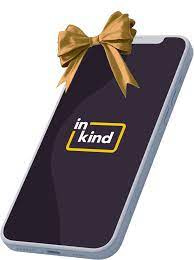
Dear Ms. Smartphone: For my birthday my kids gave me a eGift card to a popular local restaurant. The eGift card was sent via email and when I went to redeem it I had to download an app to my iPhone. The app then tried to download the gift card to my phone’s wallet but I think I messed that part up. I could still use the gift card through the app. When I got to the restaurant (yum) it basically worked OK, but I could not use up the full amount of the card, etc. Wendi, Tiburon
Dear Wendi: It’s a good thing you were not in a hurry to eat, as that sounds like an extended process if hungry! From your notes I gather that the app you are referring to is called inKind, although there might be others like it. In some ways this e-Gift card app is modeled after house accounts where you run a tab each time you visit, so you don’t have to carry cash. However, these days you have to pop out your phone and use their app when the bill arrives.
I checked with some restaurants to see what they thought of the app, and the servers told they were never sure that people really paid for their meal, it was an honor system! Since there was no exchange of cash or credit card, diners simply fold their napkins and left once they authorized payment through the app. This app is to restaurants what the phone is to Tesla vehicles. You cannot leave home without it and it knows who you are!
The serving staffs said they had difficulty splitting out the bill if there were multiple credit cards on the table. That makes sense, as InKind produces a code that is linked to the total bill- perfect for back end data processing but less transparent for friends sharing a night out. This cashless exchange is still in the early days.
A Bigger Business:
The business behind the “InKind” app is bigger than the meal you were served. It’s a new business model where they serve as the middleman. InKind buys a certain number of food and beverage credits from a restaurant owner, say $1,000, giving them operating cash but this $1,000 might have a retail value of say $1,200. InKind makes money by selling the food and beverage credit via gift cards and vouchers. These sell these for more than what they paid for them.
The gift-voucher you received was a two-step process, and that’s why you had to use the two-step phone app to unlock it. First, InKind purchased credits from your restaurant, and then branded them as a gift card. Then, your kids purchased the gift card from the restaurant site, and InKind was powering that transaction, plus giving them “bonus points.”
Is the App A Keeper?
If you plan to eat at this restaurant again and hope to accumulate “points” for future meals, then you should keep the app on your smartphone. To encourage you to add funds to your account (through a credit card) InCard will top it off with a cash bonus. Depending on the up-front cash they offer this could be substantial. But, if this was just a one-time gift, or you have to wait until your next birthday, then consider deleting it from your device.
There are several ways the app could be collecting data about you. The default setting when the app is downloaded allows Siri (on the iPhone) to learn how you use the app and make suggestions. They might utilize these for ads or notifications. Apple i0S 7.0 and later allows you to turn off tracking, but that will not prevent an app like InKind from sharing your data with a third party.
Is the App Private?
Also, your restaurant tab is not complete until you leave a tip. But, catch 22. You cannot pay the tip through InKind. Hence your account with them is also linked to a credit card, unless you choose to tip with cash. So potentially your purchase history, device ID, and identity, is shared. Perhaps more. It’s certainly different from an old-fashioned gift card that came on a piece of plastic and was anonymous.
Restaurants may like this new two-step model for gift cards and it gives them up-front funds to grow as they recover from the pandemic. Perhaps it also produces time-savings for an understaffed, busy restaurant. They can streamline how they deploy servers, since they no longer have to ferry credit card receipts back and forth. Whether it leads to a better customer experience or creates more of a fast-food ambiance remains to be seen. Since your customer data is their rocket fuel for selling future meals, take steps to secure it.

Leave a Reply
You must be logged in to post a comment.